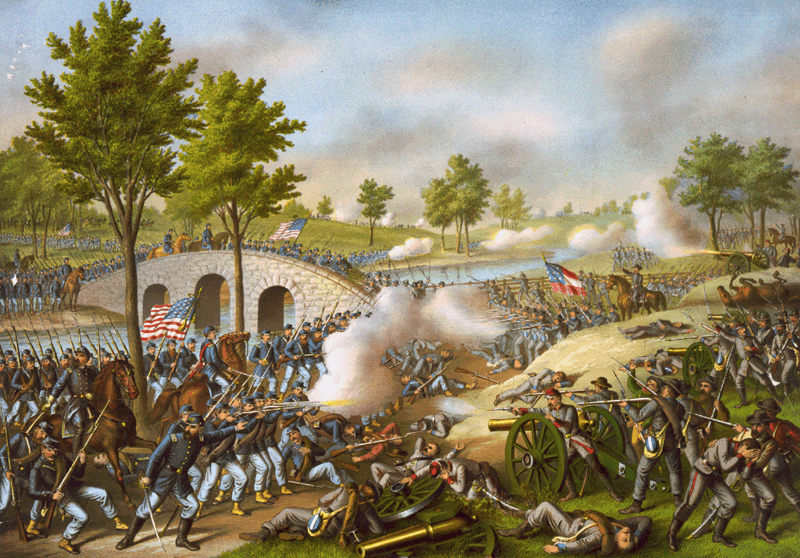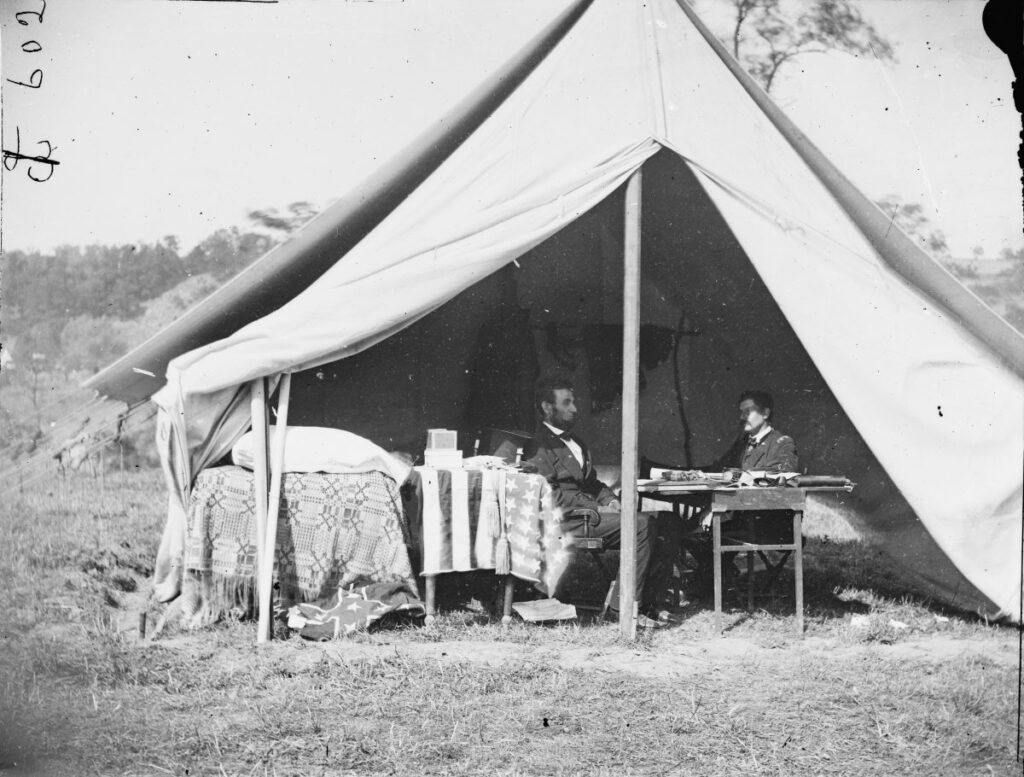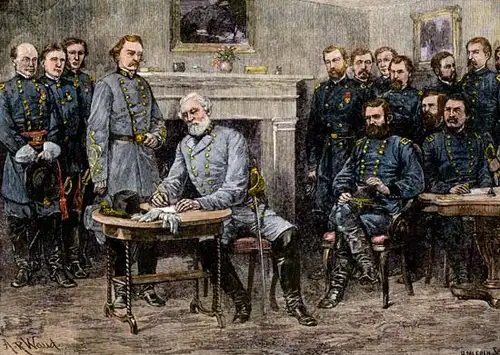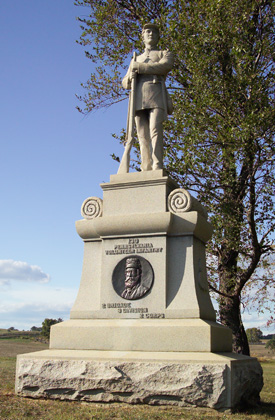The Battle of Antietam was a battle that was fought between the Confederates and the Federal Union during the American Civil War of 1861 to 1865. The battle of Antietam happened on September 17th, 1862. The Battle of Antietam is considered one of the deadliest one-day battles, with numerous casualties on both sides. The Battle of Antietam is also known as the Battle of Sharpsburg as Sharpsburg was the nearest city to the Battle of Antietam location.
The Confederate army was led by General Robert E. Lee, who also happened to be the Overall Commander of the Confederates Army. General Lee was leading the Confederate Army of Northern Virginia. The Union Commander in charge was General George B. McClellan, who led the Army of the Potomac of the Federal Union. The Battle of Antietam map includes important locations like Dunker Church, West Woods, Burnside Bridge, and Sharpsburg.
The Battle of Antietam

General Lee and his troops marched towards Maryland by entering the Federal territory. The troops of the Federal Union were on their way from Washington DC to stop the advancements of General Lee and his men. General Lee divided his army and sent a part of his troops under the leadership of General Thomas “Stonewall” Jackson to the Harper’s ferry. Harper’s ferry was quickly captured by General Jackson and his troops due to the poor organization of the Union army under Colonel Dixon N. Miles. Now, having conquered the Harper’s ferry, General Lee was well aware of the forces of General McClellan advancing towards them.
General Lee found a perfect location for the defense by Antietam Creek, which only has narrow stone bridges for crossing. The Creek is located a few miles from the city of Sharpsburg. General Lee is also joined by General Jackson from Harper’s ferry. On September 15th, 1862, General Lee and his army were stationed at Antietam Creek, waiting for the arrival of the Federal Union army led by General McClellan.
Entry Of General McClellan

General McClellan and his men reach Antietam Creek by September 16th, believing the Confederate army will outnumber the Union men. Little did they know about the plans of General Lee and his little lies on the number of men. The actual number of soldiers on General Lee’s side of the Confederate army was 40,000, and the number of men under General McClellan was 65,000. The margin of victory is very high for General McClellan and the Federal army, but he was completely unaware of the actual truth. By the early morning of September 17th, the troops had started to fight.
General Joseph Hooker and his men began marching towards Dunker Church to swipe the left flank of General Lee. The west woods and the Miller’s cornfield are filled with wild fighting between the Confederates and the Federal men. General Hooker and his men progress to Dunker Church in stealth through a cornfield. A counter-attack was received from John Bell Hood and his troops and drove away General Hooker. General Hooker got the aid of General Mansfield and his 12th corps. One part of the 12th corps entered the enemy line near the Dunker Church.
As General Hooker leaves the fight midway due to a leg injury, a chaotic environment is seen among the Union army. General Edwin Sumner led the 2nd corps, and they advanced to the front line. The Sedgwick division of the 2nd corps entered the West Woods to target the left flank of General Lee, but they received a heavy blow from the Confederate army.
The French Division of the Union army directly face General D. H. Hill and his troops near a sunken road. The Union army was reinforced by the arrival of General Richardson. On the other hand, R. H. Anderson joined D. H. Hill in the fight. Five divisions of the center of the Confederate army fell back. General James Longstreet managed the artillery attack from the nearby Piper farm, and D. H. Hill counterattacked, which significantly slowed down the troops of General Richardson.
With subsequent injuries to General Richardson, again, the Union halts. The Union army is now freshly supplied with the 6th corps under General Franklin. By afternoon, the casualties at the sunken road range between 5,000 to 6,000. The sunken road was named the bloody lane. The overall battle of Antietam casualties were around 16,000.
General Lee’s Contribution

General Lee’s Confederate army’s left flank was crucial for the escape, and it was significantly compromised due to the previous attacks. General Ambrose Burnside and his 9th corps were attacking from the other side of Antietam Creek to divert the attention of the Confederate soldiers from the West Woods. The attack of the 9th corps was delayed, and this gave General Lee an ample amount of time to flee the region. General Burnside compartmentalizes and sends General Isaac Rodman to cross Antietam Creek at a location called Snavely’s Ford.
The other division of General Burnside was about to cross a bridge with the heavily armed Confederate forces on the other side. The attempts to cross the bridge were initially getting delayed due to constant firing from the other side. Brigade General Edward Ferrero and his twin 51 successfully cross the bridge. General Rodman also successfully crosses Antietam Creek with his troops.
The arrival of General Burnside and his 10,000 men was a little bit delayed due to the narrow passage of the bridge. The escape route of General Lee was also compromised by the firing of the Union army. But this delay of General burnside was advantageous for General Lee. General Burnside and his soldier successfully cut back the Confederates. By evening, the Confederates are reinforced by the troops of General A. P. Hill from Harper’s ferry. They started to attack General Burnside and his troops which made it difficult for the Union Army.
Conclusion

After a great twelve hours battle, General Lee and his men fled the scene, and General McClellan halted the attack to later meet General Lee at Virginia. Though the casualties were high on both sides, the Battle of Antietam was considered a victory on the Union side was owing to the fact that General Lee’s initial plans to sabotage Washington DC were shattered. The Battle of Antietam was the most horrific battle, with so many casualties and deaths in a single day.
The aftermath of the battle of Antietam made the then President Abraham Lincoln declare the emancipation proclamation, which was an initiative by President Lincoln to free all the enslaved people. The Antietam National Battlefield holds a memorial for all the battle participants.
